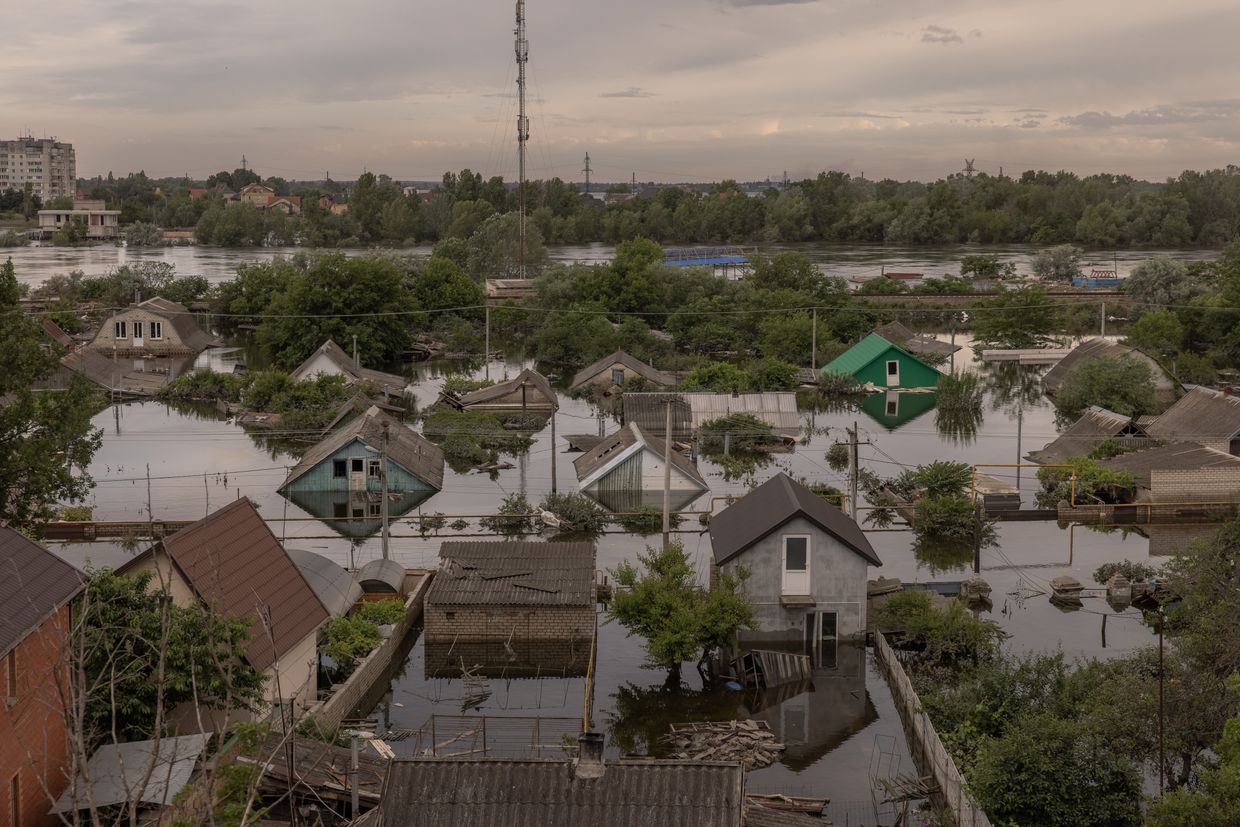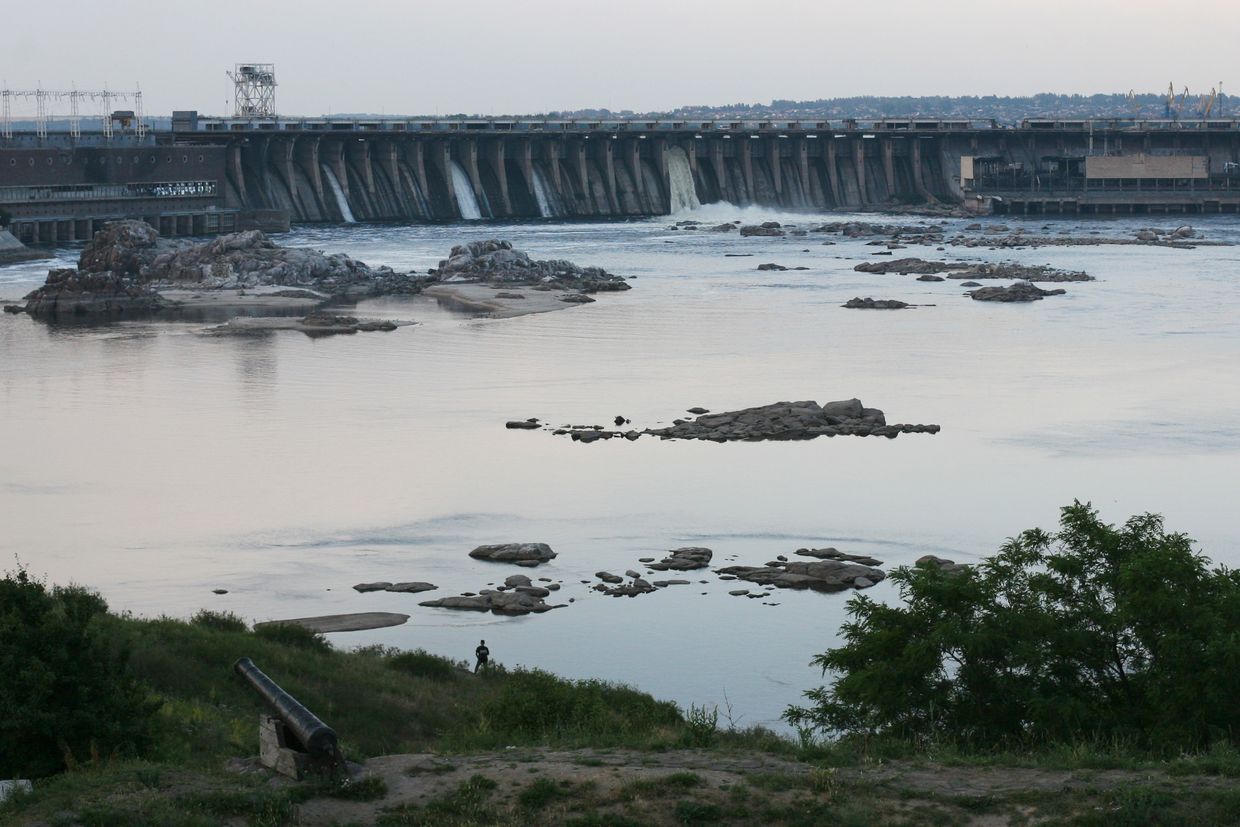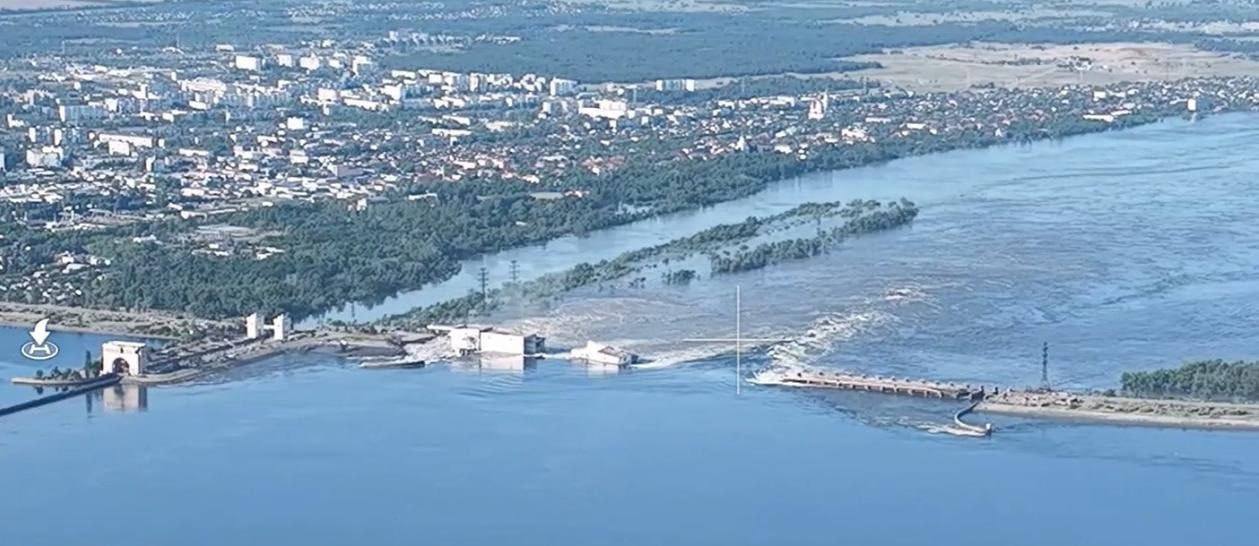A verdant green forest has sprouted in one of Ukraine’s most unlikely locations — the Kakhovka reservoir left nearly empty after Russia blew up its dam last year.
Following the destruction of the dam on June 6 last year, nearly 20 cubic kilometers of water flooded Ukraine’s four southern oblasts causing a massive humanitarian and environmental crisis.
The vast reservoir, spanning an area nearly the size of London and New York combined, lost 90% of its water, causing water shortages for 700,000 residents. The environmental damage has been catastrophic with pollutants poisoning the soil and natural habitats wiped out.
A year later, 1,600 square kilometers of native poplar and willow trees have sprouted across the former reservoir. The landscape hasn’t been so lush since before the Soviets flooded the plain to construct the dam in 1956.
“This is a huge coincidence,” Mykhailo Mulenko, acting head of the Nature Protection Sector of the Khortytsia National Reserve, told reporters at a press tour in Zaporizhzhia to mark the anniversary of the explosion.


The timing of the attack coincided with the pollination of the willow and poplar trees in May with seeds spreading across the stagnant waters of the reservoir and sinking into the mud. After the reservoir was drained, the seeds, still stuck in the mud, began to germinate and grow rapidly.
“If the Kakhovskaya dam had been blown up in March or August, the situation would have been completely different and much worse,” Mulenko added.
In just one year, the tallest saplings tower up to five meters high and number 20 plants per square meter. The trees have guzzled up recent spring floods, helping their growth.
Mulenko predicts that wild deer and boar could roam the forest in just five years time if conditions remain the same, echoing its pre-Soviet life as part of the Velykyi Luh (Great Meadow).
Under the trees on the north side of the reservoir and the nearby Khortisya Island in Zaporizhzhia Oblast, Ukraine’s Academy of Scientists noted at least 100 species of herbaceous plants and mosses forming a new ecosystem.

The results are promising for a region that experts previously warned could suffer from desertification as a result of the catastrophe.
But the sound of crushed shells when walking through the young forest is a cruel reminder of the price of this new ecosystem.
“A lot of living organisms died in connection with the disaster within the Kakhovka Reservoir. This can be compared to ecocide,” said Svitlana Okhrimenko, deputy director of the Khortytsia National Reserve in Zaporizhzhia.
Ukraine wants to prosecute Russia for what it deems as environmental war crimes, or ecocide. The Environmental Protection and Natural Resources Ministry is documenting cases of damage caused by Russia to Ukrainian land and wildlife and plans to take Moscow to the International Criminal Court (ICC).
Environmental damage has cost Ukraine $60.5 billion, according to Environmental Minister Ruslan Strilets. The Kakhovka crisis alone caused $3.8 billion in damages, including Hr 1.3 billion ($32 million) from the loss of freshwater and Hr 1.2 billion ($30 million) in soil pollution.
“These numbers are dynamic. Calculations are still underway,” said Bohdan Vasyliovych, head of the State Environmental Inspection of the Southern District, Zaporizhzhia, and Kherson oblasts.

The economic impact on local industries is also large. The reservoir was a source of irrigation for farmland, designed to cover nearly 6,000 square kilometers. Initial calculations from the Agricultural Ministry estimated losses in irrigated land at $800 million.
Fishermen too have paid a hefty price with freshwater fish swept into the Black Sea and fisheries flooded. Last year, the Agricultural Ministry said the industry expects losses of Hr 10 billion ($250 million) and will take years to recover.
In the northern part of the reservoir, close to the village of Malokaterynivka in Zaporizhzhia Oblast, Vasyliovych notes that 10,000 fish corpses were discovered. The amount of fish amounts to about Hr 1.7 million in losses ($42,300).
Around 20 kilometers north of Malokaterynivka lies Khortytsia Island, a sacred place in Ukraine once home to the Zaporizhzhian Cossacks. Water levels dropped by five meters around the island adding 1.8 square kilometers of land.
Nearly a square kilometer of lakes dried up around Khortytsia Island, uncovering hidden artifacts including a historic longboat but killing wildlife and rare aquatic plants in the process.
The lakes that remain have shrunk and are no longer connected to the Dnipro River, causing overheating that suffocates aquatic wildlife.

The nearby Dnipro Dam, which served the upper end of the Kakhovka reservoir, gushes out water from the Dnipro River but at a fluctuating rate. While this spring saw water levels rise once more, they have since retracted, displaying rocks and sand previously submerged.
Okhrimenko says vegetation has also returned to areas around the island, but stresses that it is currently impossible to grasp the full extent of the damage as Ukraine doesn’t yet have the capabilities to account for all the small organisms harmed by the catastrophe.
It will take years before Ukraine has those results.














